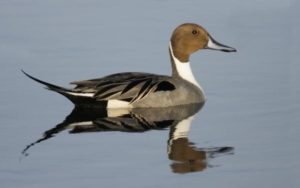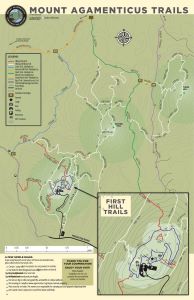Greetings from the Kids’ Corner at Mount Agamenticus! For our sixth season, we’re going digital, and we hope you’ll join us!
It’s bird migration time and Mrs. J is here to help with basic bird identification by sharing resources, photos, and arts and crafts activities to help you learn!
Much of the information shared below comes from the Cornell Lab of Ornithology. This is a wonderful resource for bird enthusiasts, and we encourage families to visit their website and to check out their bird identification app, Merlin. We’ll be sharing links to more resources as our lessons progress!
Another great tool from Cornell is eBird, which allows you to record bird sightings while out in the field. Check out this link for eBird Essentials and a tutorial from the Cornell “Bird Academy.”
This week we’re continuing to hone our bird identification skills with a look at bird behavior.
How do you find your best friend on the playground? Is he or she very active, or sitting quietly reading a book? Can you quickly find your son or daughter out on the basketball court? Do you prefer large parties, or like to spend time with one friend at a time? Are you a food gobbler, or prefer small bites? Do you sit up tall at the dinner table, or prefer to sit back and relax in your chair?
We are all observers of behavior whether we’re spending time with family and friends, or watching birds. Bird behavior can help you identify your bird by watching its posture, how it moves, how it eats, whether it’s hanging out with lots of “friends,” or is a solitary bird.
If I see a small bird climbing up the trunk of a tree, perhaps even climbing down the tree head first, I might guess it’s a Nuthatch, or Brown creeper because I’ve sat and observed them do this many times. In summer, I like to watch the flocks of Sanderlings scurry along Ogunquit Beach, running back and forth with the oncoming and receding waves. While there, when the tide is right, I’m always amazed by the “dive-bombing” of Common terns, zooming down from high above the mouth of the river, head first into the water to catch silvery fish. In contrast, I wouldn’t expect any of my backyard birds to behave like that!

Some Bird Behaviors to Look For…
Activity: Guess Who. Can you guess the bird based on the behavior?
- Activty Sheet available here.
Behavior – A Closer Look at “Dabblers and Divers”

Mallards – Photo from Bird Eden
Dabbling Ducks go “Bottoms Up” to eat insects or weeds. This behavior will help you readily identify them! Their legs are positioned in the middle of their underside so they can balance themselves when they are upside-down in the water. They have long, tapered wings that make it easy for them to fly just by jumping out of the water and flapping their wings.
You can find the Dabbling ducks (like the Mallards to the left and the Northern Pintail below) in shallow waters and they seem to sit up high upon the water surface.

Northern Pintail – Photo from Bird Eden
Diving Ducks dive right into the water – completely, to get food. Watching the behavior of these ducks is like a magic trick – now you see them, now you don’t. Seems as soon as they come up for air, they’re diving back under again. Their legs are positioned near the back of their bodies which helps them swim underwater. Diving ducks have to take a kind of “running start” before they can lift off and fly. They do a sort of hop, skip, and jump that makes them look like they’re walking on water until they can launch into the air.
Diving ducks are mostly found in deeper waters and they sit lower in the water than Dabblers.

A Scaup getting ready to dive / Scaup underwater – photo from Whispers from the Ledge
Activity: Paper Plate Bird. You’ll need a paper plate or plain paper, a pencil, scissors, glue, a hole punch, and string or yarn to craft your own bird. You may want paint, crayons, or markers if you’d like to add color!
- Step-by-Step Guide available here.
Additional resources from the Cornell Lab on bird behavior are available here.
Last modified: June 17, 2020



